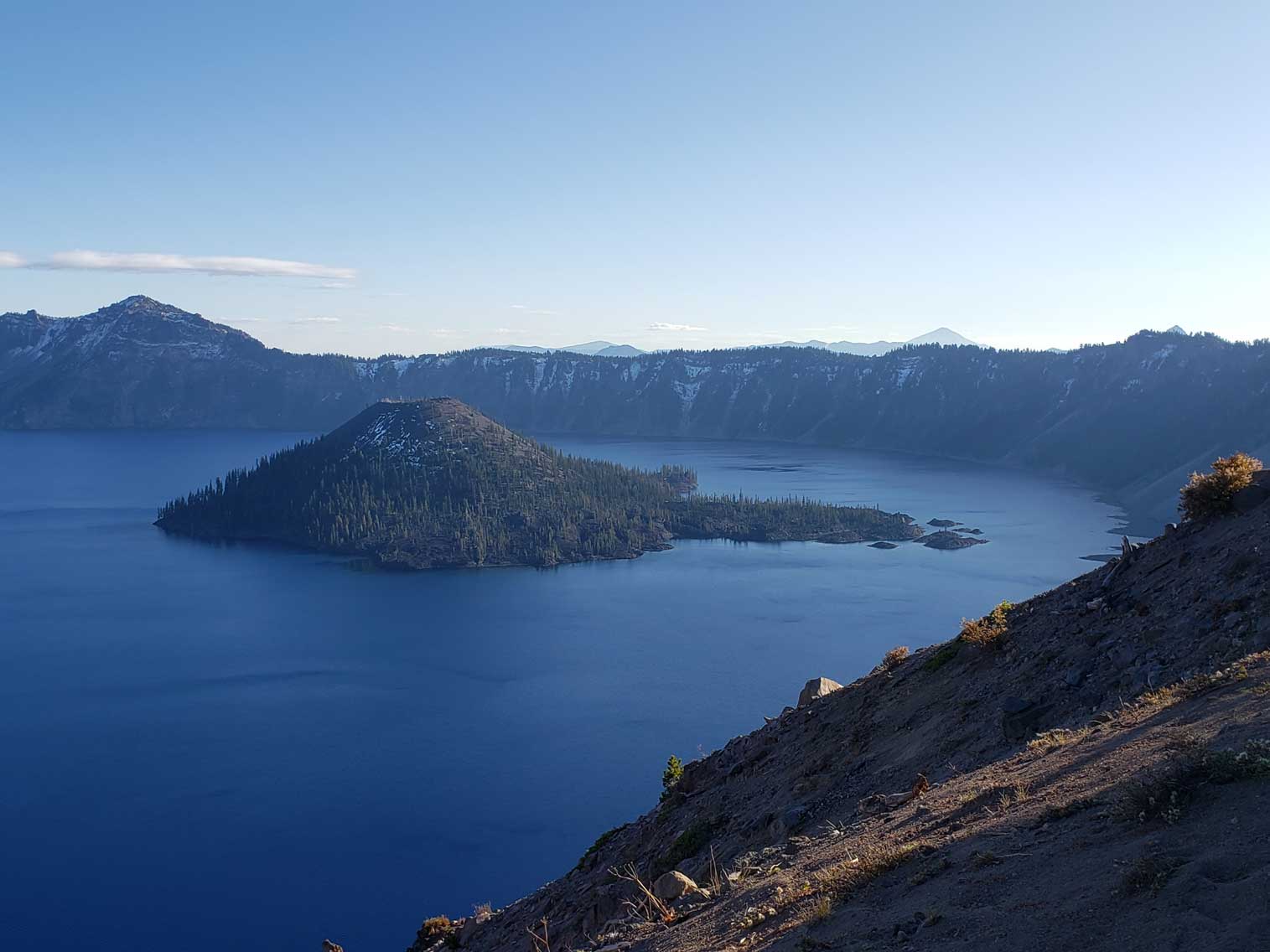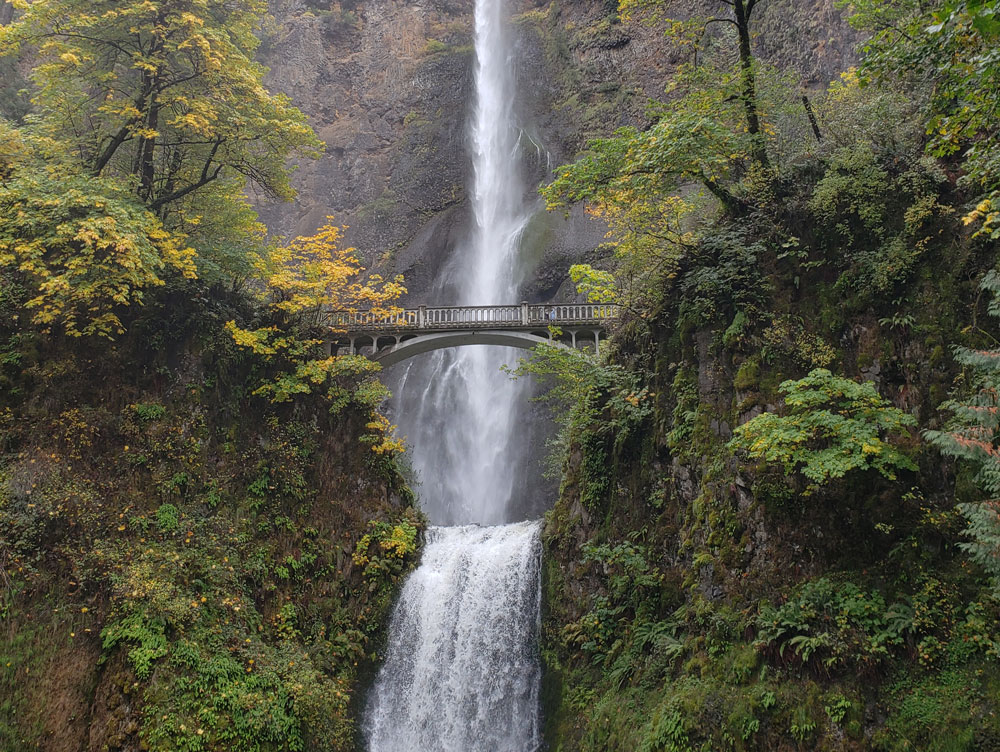Oregon Travel Guide
State in the Pacific Northwest region of the Western United States and one of the most geographically diverse states in the U.S., marked by volcanoes, abundant bodies of water, dense evergreen and mixed forests, as well as high deserts and semi-arid shrublands
Places to See in Oregon
Crater Lake National Park
National park encompassing the caldera of Crater Lake, the deepest lake in the United States, the second-deepest in North America, and the surrounding hills and forests

Painted Hills
Photography by User: MrX, CC BY-SA 3.0, via Wikimedia Commons Image Size Adjusted
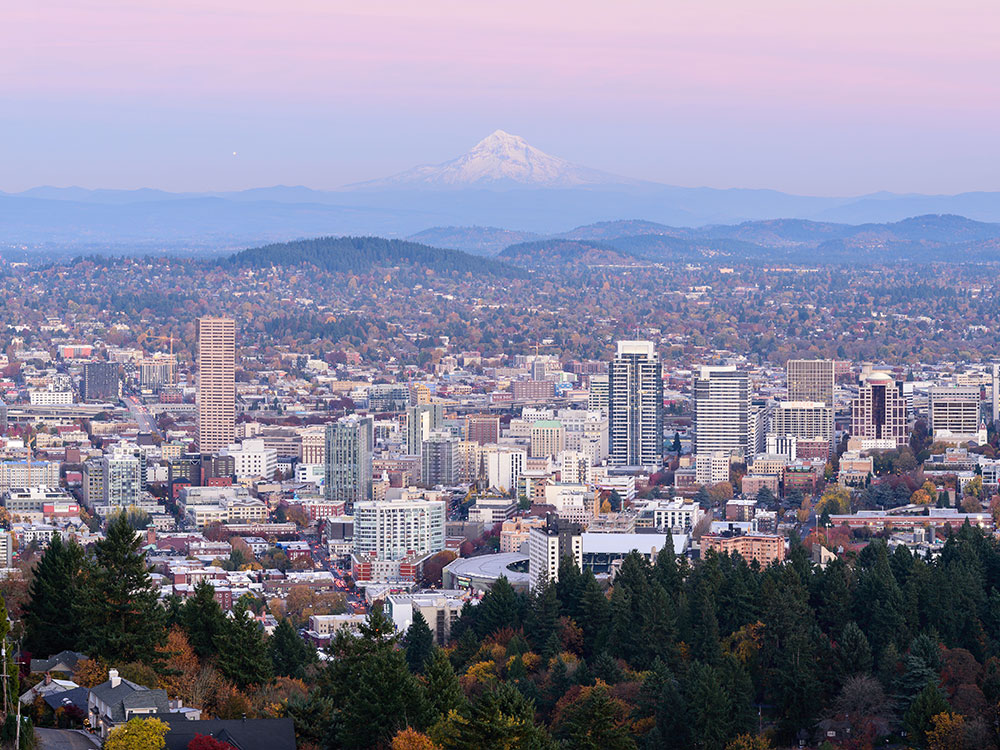
Portland from Pittock Mansion
King of Hearts, CC BY-SA 4.0, via Wikimedia Commons Image Size Adjusted
Portland, OR
Largest and most populous city in Oregon and a major port in the Willamette Valley region of the Pacific Northwest, at the confluence of the Willamette and Columbia rivers in Northwestern Oregon and has earned a reputation as a bastion of counter-culture
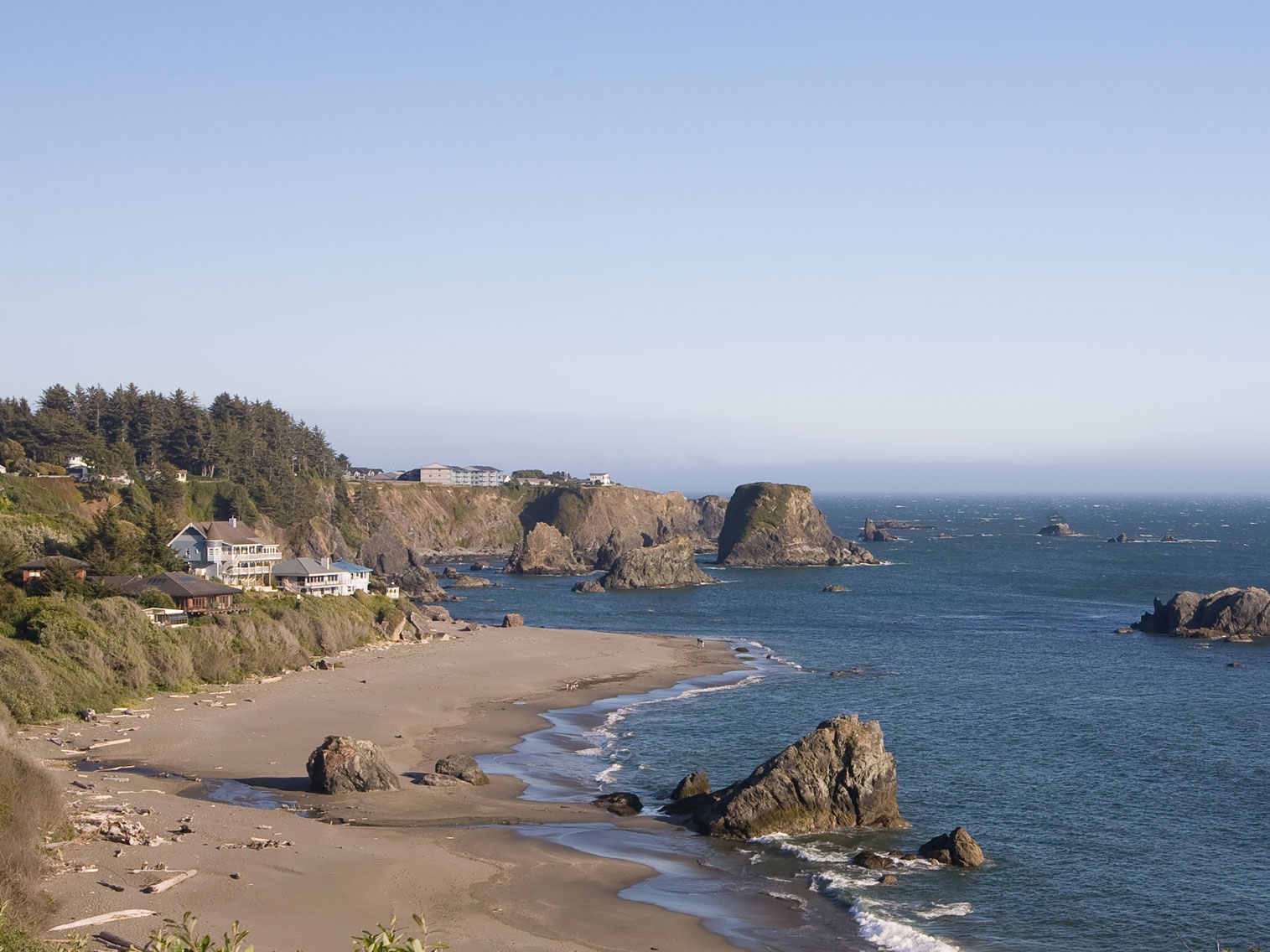
Chetco Point
Cacophony, CC BY-SA 3.0, via Wikimedia Commons Image Size Adjusted
Oregon Coast
Coastal region of Oregon stretches approximately 362 miles (583 km) from the California state border to the Columbia River in the north with over 80 state parks and recreation areas
Columbia River Gorge
Canyon of the Columbia River in the Pacific Northwest up to 4,000 feet (1,200 m) deep, stretching for over eighty miles as the river winds westward through the Cascade Range, forming the boundary between the state of Washington to the north and Oregon
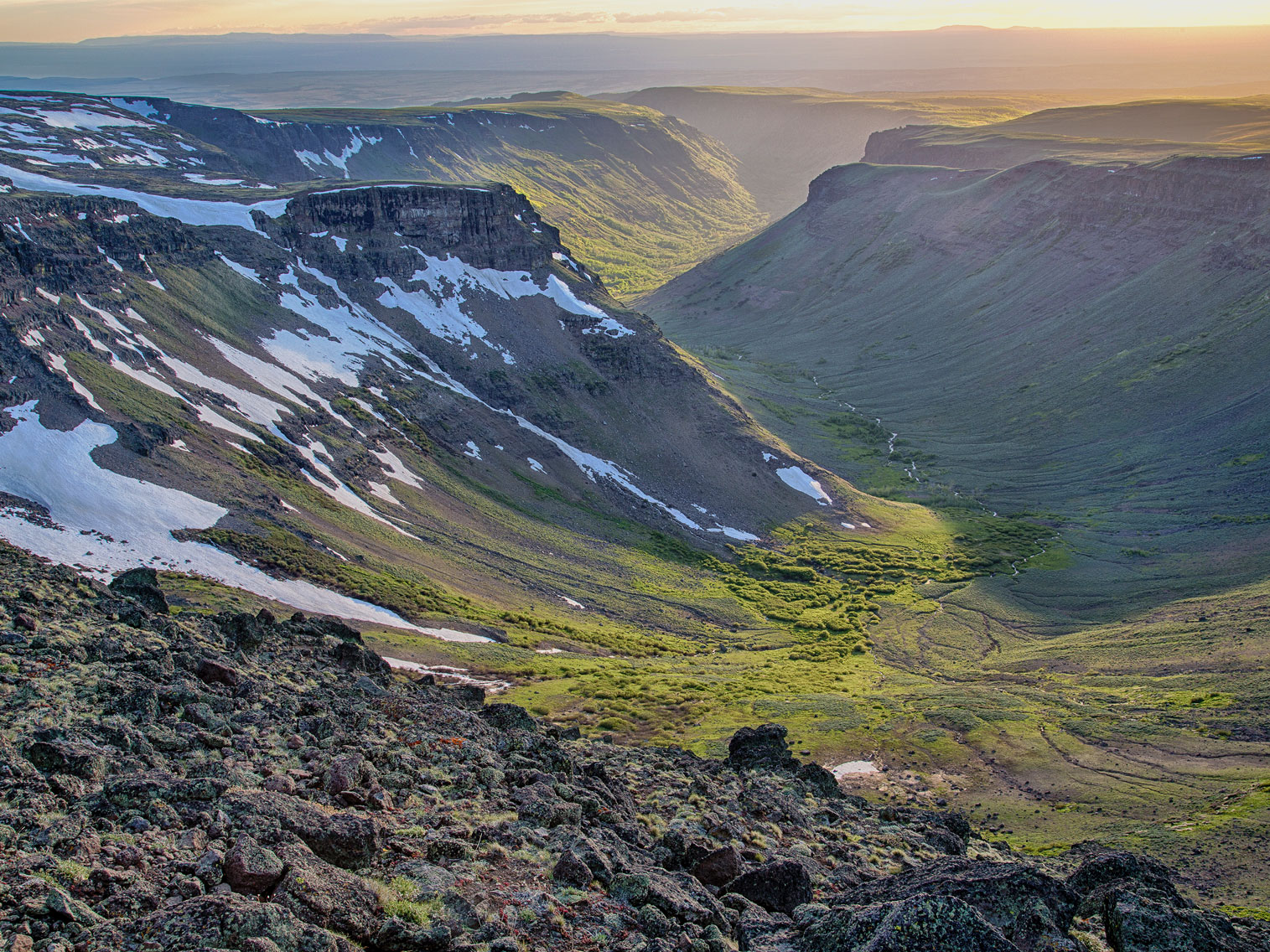
Steens Mountains
Bureau of Land Management, Public domain, via Wikimedia Commons Image Size Adjusted
Southeast Oregon
Southeastern Oregon is a geographical term for the area along the borders of Oregon with Idaho, California, and Nevada. It includes the populous areas of Burns, Klamath Falls and Lakeview. The region is also known by its nickname of the Oregon Outback.
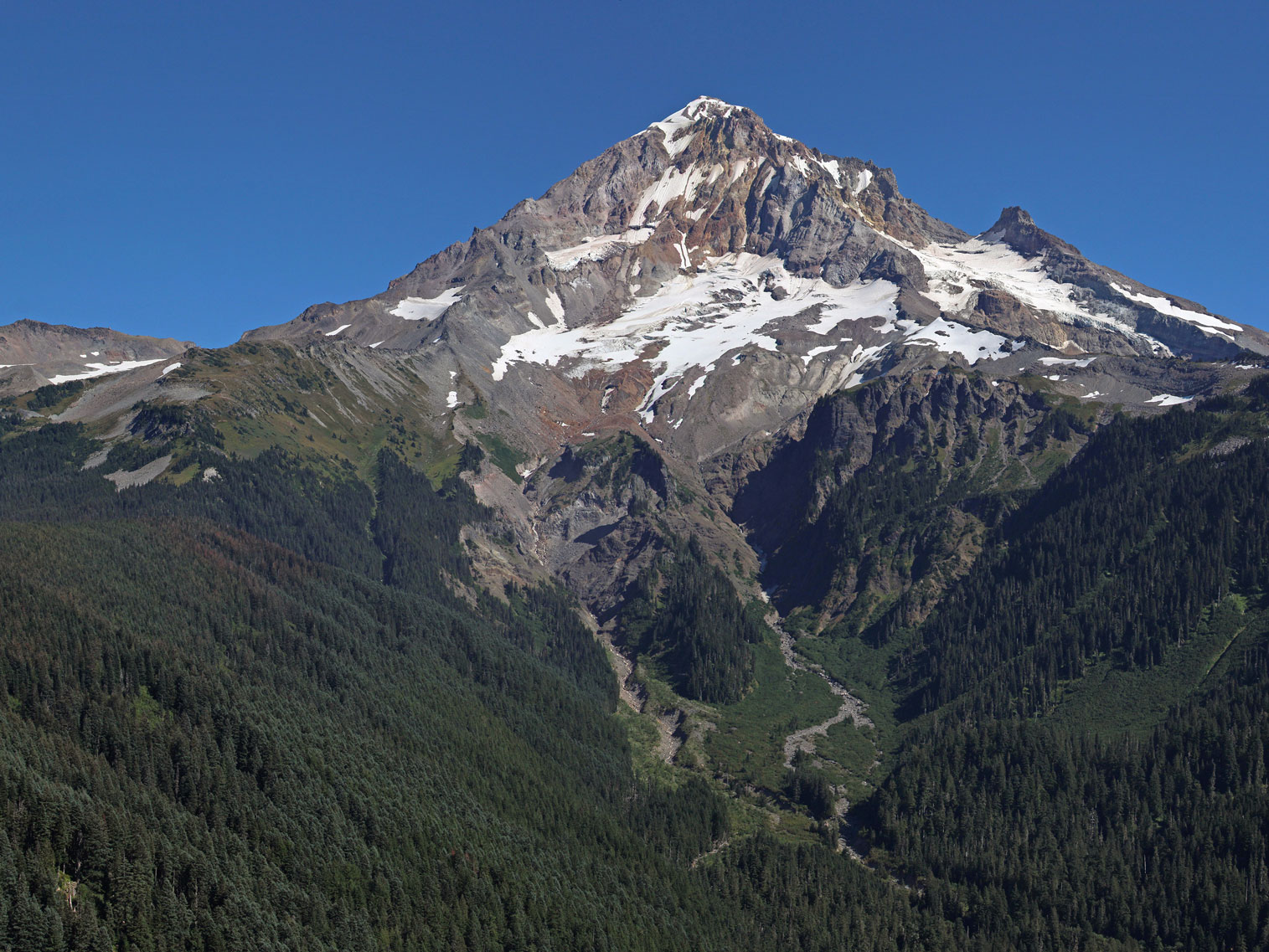
Mount Hood
Walter Siegmund, CC BY-SA 4.0, via Wikimedia Commons Image Size Adjusted
Oregon Landmarks and Landscapes
Mount Hood · Mount Hood Railroad · Mount Hood Scenic Byway · Mount Jefferson · Silver Falls State Park · Smith Rock State Park
Oregon is a state in the Pacific Northwest region of the Western United States. The Columbia River delineates much of Oregon's northern boundary with Washington, while the Snake River delineates much of its eastern boundary with Idaho. The 42° north parallel delineates the southern boundary with California and Nevada.
Oregon is the ninth largest and 27th most populous U.S. state. The capital, Salem, is the second-most populous city in Oregon. Portland, with 647,805, ranks as the 26th among U.S. cities. The Portland metropolitan area, which also includes the city of Vancouver, Washington, to the north, ranks the 25th largest metro area in the nation, with a population of 2,453,168.
Oregon is one of the most geographically diverse states in the U.S., marked by volcanoes, abundant bodies of water, dense evergreen and mixed forests, as well as high deserts and semi-arid shrublands. At 11,249 feet (3,429 m), Mount Hood, a stratovolcano, is the state's highest point. Oregon's only national park, Crater Lake National Park, comprises the caldera surrounding Crater Lake, the deepest lake in the United States. The state is also home to the single largest organism in the world, Armillaria ostoyae, a fungus that runs beneath 2,200 acres (8.9 km2) of the Malheur National Forest.
Oregon has several National Park System sites, including Crater Lake National Park in the southern part of the Cascades, John Day Fossil Beds National Monument east of the Cascades, Lewis and Clark National Historical Park on the north coast, and Oregon Caves National Monument near the south coast.
Tourism is centered on the state's natural features - mountains, forests, waterfalls, rivers, beaches and lakes, including Crater Lake National Park, Multnomah Falls, the Painted Hills, the Deschutes River, and the Oregon Caves. Mount Hood and Mount Bachelor also draw visitors year-round for skiing and other snow activities.
Portland is home to the Oregon Museum of Science and Industry, the Portland Art Museum, and the Oregon Zoo, which is the oldest zoo west of the Mississippi River. The International Rose Test Garden is another prominent attraction in the city. Portland has also been named the best city in the world for street food by several publications, including the U.S. News & World Report and CNN. Oregon is home to many breweries, and Portland has the largest number of breweries of any city in the world.
The state's coastal region produces significant tourism as well. The Oregon Coast Aquarium comprises 23 acres (9.3 ha) along Yaquina Bay in Newport, and was also home to Keiko the orca whale. It has been noted as one of the top ten aquariums in North America. Fort Clatsop in Warrenton features a replica of Lewis and Clark's encampment at the mouth of the Columbia River in 1805. The Sea Lion Caves in Florence are the largest system of sea caverns in the United States, and also attract many visitors.
This article uses material from the Wikipedia article "Oregon", which is released under the Creative Commons Attribution-Share-Alike License 3.0
